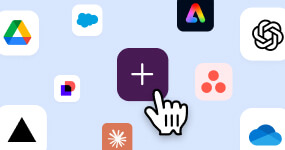Nearly two years after the world lurched into its first global Covid-19 shutdowns, office reopenings remain uneven. Some organizations are fully back in person, while others remain almost exclusively remote. But, increasingly, employers are opting for a middle ground in a hybrid workplace model. According to a 2021 Statista survey, 66% of company leaders are redesigning office spaces to support a hybrid working environment.
A loose hybrid office definition includes any setup in which employees come to the office sometimes and work remotely the rest of the time. Schedules might be set by management, such as bringing in specific teams on certain days. Or asking employees to visit the office for special events. Alternatively, individuals might get to decide how often to come in, or whether to remain fully remote.
Regardless of what the hybrid workplace looks like, one thing is clear: In-person meetings, or even real-time video conferences, are tough to schedule. Fortunately, asynchronous video meetings can fill in the gap.

What is an asynchronous video meeting?
Asynchronous communication is any dialogue that doesn’t take place in real time, such as email or texting. One person creates the communication and sends it along, and the recipient reads and responds to it at a different time. Asynchronous video meetings work the same way, except in video form. In some cases, the recipient will respond with their own video. Other times, either no response or a quick written response is fine.
Why asynchronous video meetings are the future of the hybrid workplace
They say that necessity is the mother of invention. When the world shut down in 2019, many employers were unprepared. Early on, most tried to replicate the in-office experience, including real-time video meetings. But we quickly learned that getting remote workers together at the same time, only to have videos freeze or participants drop out, wasn’t the most efficient use of time.
So we learned and adapted and eventually built a better mousetrap. According to a recent study by Canva, about half of all knowledge workers report having made an asynchronous video in the past 18 months. With the hybrid workplace quickly becoming the new reality, those numbers are only expected to grow.
While the oft-cited statistic that 93% of communication is nonverbal may not be strictly accurate, experts agree that body language and tone are essential to fully understanding a message. Relying solely on written asynchronous communications can turn into a game of telephone, where the message gets garbled along the way. But, of course, real-time video meetings have their own limitations.
Asynchronous videos can solve a lot of these problems for the hybrid workplace. Advantages include:
- Efficiency. Most asynchronous workplace videos feature just one or two speakers. They can be quickly recorded and distributed via email, text or collaborative platforms such as Slack.
- Recording. Even if some people participate remotely in real time, recording the video lets you share it asynchronously to anyone who wasn’t there. You can also save and distribute it for everyone to refer back to in the future.
- Integration. Asynchronous videos are typically short and easy to integrate with other tools and workflows. For example, you might send out a set of project guidelines documents accompanied by an explanatory video.
- Security. Most video-recording platforms have built-in security tools. Usually, you can also password-protect your videos to ensure that only those with authorization can view them.
Inclusivity and engagement. In a hybrid workplace, remote workers can sometimes feel left out. Asynchronous video meetings help people feel like part of the team, allowing them to participate when they can. And videos tend to feel more personal and engaging than yet another email or text.
How to stay ahead of the curve
Asynchronous video meetings work best when they are folded into an overall communications plan. With collaborative tools like Slack, you can import your video messages right into the platform, without the need to switch between multiple applications. You can use channels to direct messages to only those who need them and seamlessly incorporate other communication tools, from email to conversation threads.
The hybrid workplace is here to stay. Asynchronous video lets you take your internal communications to the next level, incorporating valuable body language and other external cues without the inefficiency of real-time video meetings.






